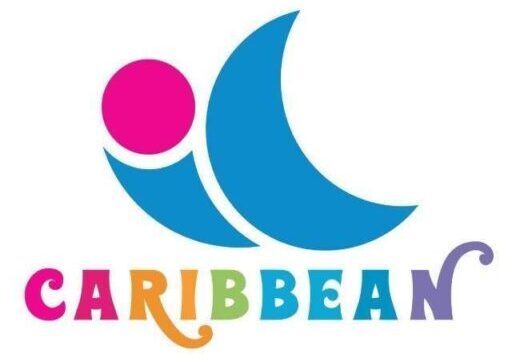Food in the Caribbean is more than just something to eat, it’s a celebration of culture, history, and stories passed down through generations. Each traditional dish carries the spirit of the island it comes from, flavored with folklore, shaped by struggle, and served with love. From spicy jerk chicken to hearty callaloo, every bite comes with a backstory that’s just as rich as the meal itself. In this blog, we’ll explore the fascinating Caribbean food stories behind iconic island dishes, uncovering the legends, traditions, and tasty truths that make each one unforgettable.
🥑 1. Ackee & Saltfish (Jamaica): A Love Story with a Side of Danger
If “delicious with drama” were a dish, it would be ackee and saltfish. This is Jamaica’s national treasure, and its origin is straight out of a telenovela.
Ackee, the yellow fruit in this duo, was brought from West Africa in the 18th century. But here’s the twist: if you eat it unripe, it’s toxic. Yep, your breakfast could fight back. This is why Jamaicans say, “Eat ackee slow and wise.”
Saltfish, the other half of the power couple, is preserved cod brought by Europeans. Together, this combo became a staple for enslaved Africans on the island—resourceful folks turned scraps into satisfaction. This dish became not just a meal, but a symbol of survival, pride, and identity.
Today, it’s eaten with dumplings, plantains, or festival bread—depending on who’s cooking and how much they like you.
🍽️ Where to Eat
- Miss T’s Kitchen, Ocho Rios – Cozy, colorful, and full of soul.
- Scotchies, Montego Bay – Famous for jerk but ackee’s also a superstar here.
🌶️2. Doubles (Trinidad & Tobago): One Bara Is Never Enough
Say hello to Trinidad’s favorite handheld breakfast—doubles. It’s spicy, messy, and so addictive it should probably be illegal. But thank goodness it’s not.
Each double features two pieces of bara (fried dough) holding a dollop of curried chickpeas, drizzled with chutneys, hot pepper sauce, and plenty of love. It’s soft, spicy, and dangerously good.
Legend has it that in the 1930s, a vendor gave a hungry boy two pieces of bara instead of one, and BOOM—doubles were born. Now, everyone in Trinidad has a favorite vendor and will passionately defend it like it’s family.
Be warned: ask for “plenty pepper” only if your tongue has battle experience.
🍽️ Where to Eat
- D Original Sauce Doubles, Port of Spain – Crowd favorite.
- Debe Doubles Strip, South Trinidad – Dozens of stalls, one mission: flavor.
🐟 3. Flying Fish & Cou-Cou (Barbados): Catch It if You Can
Long ago in Barbados, fishermen believed flying fish were magical messengers from the sea gods. These little fish didn’t just swim, they soared through the air like island acrobats.
One day, during a storm, a poor fisherman caught a single flying fish. He brought it home, and his wife, with only cornmeal and okra left in the pantry, whipped up a humble meal. They shared it, gave thanks and the storm stopped.
Since then, Bajan folks say Flying Fish & Cou-Cou brings peace, protection, and the spirit of the sea. And if you see a fish fly right over your boat? That’s good luck and dinner in one!
Flying fish are known for their little leaps out of the water (they don’t actually fly, but they try). Meanwhile, cou-cou is made from cornmeal and okra, stirred so much you’ll develop biceps just watching.
Folklore says eating this dish helps you “fly through life.” Some say if you clean your plate, you’ll gain luck in love. Worth a try, right?
🍽️ Where to Eat
- Brown Sugar Restaurant, Bridgetown – Cozy and classy.
- Oistins Fish Fry, Friday nights – Fish, music, and rum punch. Yes, please.
🐚 4. Conch Fritters (Bahamas): The Sea Snail That Stole Hearts
Conch (pronounced konk) is a sea snail with serious style. And when chopped, spiced, and deep-fried into conch fritters, it becomes the Bahamas’ MVP appetizer.
In the Bahamas, folks say conch fritters were born thanks to a love-struck fisherman named Eli. He tried winning over Marlee, the island’s feistiest cook, by handing her the biggest conch he could find. She laughed and said, “You want love? Fry it first!”
So he did, he chopped it, seasoned it, and deep-fried it golden. One bite, and Marlee was hooked. They say that’s the day the conch won her heart… and the island got its tastiest snack.
Even now, locals believe conch brings strength, luck, and maybe even a little romance—if you fry it just right!
These fritters are crunchy outside, tender inside, and best enjoyed with dipping sauce and ocean breeze.
🍽️ Where to Eat
- Twin Brothers, Nassau – Fritters worth flying for.
- Arawak Cay Fish Fry, a conch lover’s paradise.
🔥 5. Jerk Chicken (Jamaica): Spice, Smoke, and Swagger
If food could drop a beat, it would be jerk chicken. Spicy, smoky, and straight-up sensational, this dish is more than just grilled meat—it’s a cultural statement.
Every Jamaican has an opinion on what makes the best jerk. Some say it’s the marinade. Others say it’s the grill. But everyone agrees: if your nose isn’t running, it’s not jerk.
A long time ago in the hills of Jamaica, a brave group of people called the Maroons were hiding from the British. To stay safe, they cooked their food quietly, using wood from the pimento tree and lots of spices.
They didn’t have fancy ovens just fire, smoke, and secret ingredients. One smart old woman made a spicy mix using peppers and herbs. People say her recipe was so tasty and strong, it kept everyone happy and healthy. That spicy mix became what we now call jerk seasoning.
So when you eat jerk chicken today, you’re not just eating something spicy you’re tasting a piece of Jamaican history, made with courage, fire, and flavor!
🍽️ Where to Eat
- Boston Jerk Centre, Portland – Legendary.
- Sweetwood Jerk Joint, Kingston – No fuss, all flavor.
🍬 6. Coconut Drops (Jamaica): Sweet, Sticky, and Full of Soul
Need a snack that’s sweet, spicy, and won’t judge your sugar addiction? Meet coconut drops, a Jamaican treat made from grated coconut, ginger and brown sugar.
Long ago in a small Jamaican village, there was a grandma known for her sweet tooth and her love for coconuts. One day, while cooking by the fire, she accidentally dropped some chopped coconut into a pot of bubbling brown sugar and ginger. Instead of throwing it out, she let it cool and *boom*, a new treat was born!
Everyone loved the sweet, chewy bites, and they started calling them “coconut drops” because, well… the coconut dropped in!
Today, people say if you eat coconut drops made with love, you’ll have good luck and a sweet day ahead. Just don’t forget to share—Grandma always did!
These chewy candies were once a go-to for kids on Sunday afternoons and grannies who believed that coconut cured everything including bad moods.
You’ll often hear elders say, “Coconut drop sweet like island breeze.” And it’s true. One bite and you’ll be doing a happy dance.
🍽️ Where to Eat
- Street stalls in Montego Bay, Negril, and Kingston.
- Ask locals for “the lady with the best drop.” They’ll know.
🌿 7. Callaloo (Trinidad): Leafy Greens with a Side of Legend
Callaloo is Trinidad’s ultimate comfort food. It’s made with dasheen leaves, coconut milk, okra, and various spices—all cooked into a green, creamy soup that could convert even the pickiest eater.
Once upon a time on a warm Caribbean island, a wise old woman lived near the river. She had very little, but her garden was full of big green leaves called callaloo. One day, a sick traveler stopped by, hungry and tired. The woman cooked him a thick, green soup with callaloo leaves, coconut milk, crab, and spices.
After eating, the traveler felt strong and full of energy! He told everyone, and soon people started calling her soup “green magic.”
Since then, Callaloo has been a symbol of strength, healing, and home.
Trini moms say, “If you don’t like callaloo, you haven’t lived.” Island folklore even suggests callaloo strengthens your spirit and your singing voice.
Every spoonful tells a story of West African roots, colonial fusion, and Caribbean flair.
🍽️ Where to Eat
- Veni Mange, Port of Spain – Authentic and artsy.
- The Normandie Hotel’s Café – Callaloo with a view.
✨ The End… or Just the Beginning?
So there you have it: 7 traditional Caribbean dishes, each with its own tale, taste, and touch of magic.
These aren’t just meals they’re Caribbean food stories passed down through generations. Whether it’s ackee whispering wisdom or jerk chicken yelling in flavor, every bite is a history lesson you can chew.
Ready to explore the islands?
Just follow your nose, your heart, and maybe your stomach. 🧳🍴🌊






I do not even understand how I ended up here, but I assumed this publish used to be great
Great information shared.. really enjoyed reading this post thank you author for sharing this post .. appreciated
Your blog is a breath of fresh air in the crowded online space. I appreciate the unique perspective you bring to every topic you cover. Keep up the fantastic work!
Good post! We will be linking to this particularly great post on our site. Keep up the great writing
Awesome! Its genuinely remarkable post, I have got much clear idea regarding from this post
I like the efforts you have put in this, regards for all the great content.
This article offers a unique viewpoint that challenges common assumptions. It’s thought-provoking and insightful.
Great information shared.. really enjoyed reading this post thank you author for sharing this post .. appreciated